Are you looking for a dynamic and engaging activity to bond with your furry friend? Look no further than teaching your dog the ultimate game of Frisbee! Whether you’re a seasoned Frisbee enthusiast or a newbie to the sport, teaching your dog to catch a flying disc can be a rewarding experience for both of you.
In this complete guide, we’ll delve into the ins and outs of teaching your dog to play Frisbee. From choosing the right Frisbee for your pup to mastering throwing techniques, we’ve got you covered. Get ready to embark on an adventure filled with fun, exercise, and a stronger bond with your canine companion.
Contents Overview
Choosing the Right Frisbee for Your Pup
Selecting the perfect Frisbee for your dog is crucial to ensuring a safe and enjoyable experience for both of you. Consider the following factors when choosing a Frisbee:
- Material: The material of the Frisbee is one of the most important considerations. Opt for soft, durable materials that are gentle on your dog’s teeth and gums. Avoid hard plastic discs, as they can cause injury or discomfort. Instead, look for Frisbees made from materials like rubber, foam, or soft plastic. These materials are not only safer for your dog but also more resistant to damage from chewing.
- Size: Choosing the right size Frisbee is essential for your dog’s comfort and safety. A Frisbee that is too large may be difficult for smaller dogs to catch or carry, while a disc that is too small may pose a choking hazard for larger breeds. Consider your dog’s size and breed when selecting a Frisbee. Small dogs, such as Chihuahuas or Jack Russell Terriers, may prefer smaller discs with diameters of around 6 to 8 inches, while larger breeds, like Labrador Retrievers or German Shepherds, can handle discs with diameters of 10 to 12 inches or more.
- Weight: The weight of the Frisbee also plays a significant role in your dog’s ability to catch and carry it. Choose a lightweight disc that is easy for your dog to grasp and carry in their mouth without causing strain or discomfort. Lightweight Frisbees are typically easier to throw accurately and can help prevent fatigue during extended play sessions. Look for discs that weigh between 80 and 150 grams for optimal performance.
- Durability: Dogs can be rough on their toys, so it’s essential to choose a Frisbee that can withstand their enthusiastic play. Look for discs that are made from durable materials and are resistant to punctures, tears, and deformation. Reinforced edges or thicker construction can help prolong the lifespan of the Frisbee and prevent premature wear and tear. Additionally, consider whether the Frisbee is designed for indoor or outdoor use, as outdoor discs may be more durable and weather-resistant.
- Visibility: Opt for brightly colored Frisbees that are easy for your dog to spot, especially when playing in wide-open spaces. Bright colors like red, blue, or yellow are highly visible against various backgrounds, making it easier for your dog to track the disc during flight. Avoid Frisbees with camouflage or muted colors that may blend into the surroundings and make it challenging for your dog to locate the disc. Reflective or glow-in-the-dark Frisbees are also available for low-light conditions or nighttime play.
By considering these factors and choosing a Frisbee that meets your dog’s needs and preferences, you can ensure a safe, fun, and rewarding experience for both you and your furry friend. So go ahead, pick out the perfect Frisbee, and get ready to enjoy hours of exhilarating playtime together!
Getting Started: Basic Training Tips
Introducing your dog to the exciting world of Frisbee is a rewarding journey that begins with laying a strong foundation through basic training. Here’s a comprehensive guide to help you get started:
- Positive Reinforcement: Utilize positive reinforcement techniques to create a positive association with the Frisbee. Use treats, praise, and enthusiastic encouragement to reward your dog for showing interest in the disc and engaging with it. Make every interaction with the Frisbee a fun and rewarding experience for your pup.
- Teach Fetch: Before introducing the Frisbee, ensure that your dog has mastered the fundamental skill of fetching. Start by using a favorite toy or ball and encourage your dog to retrieve it. Use a consistent command, such as “fetch,” and reward your dog for bringing the toy back to you. Repeat this exercise until your dog reliably retrieves the toy on command.
- Introduction to the Frisbee: Once your dog is comfortable with fetching, it’s time to introduce the Frisbee. Begin by allowing your dog to sniff and investigate the disc to familiarize themselves with it. Encourage your dog to interact with the Frisbee by rolling it on the ground or holding it out for them to inspect. Use a cheerful and inviting tone to capture your dog’s interest and curiosity.
- Short Throws: Start with short, gentle throws to introduce your dog to the concept of chasing and catching the Frisbee. Keep the throws low and within your dog’s reach to increase the likelihood of success. Use a flat trajectory and avoid throwing the disc too high or too far, as this can overwhelm your dog and diminish their enthusiasm. Focus on accuracy rather than distance during these initial training sessions.
- Encourage Catching: Reward your dog for any attempts to catch the Frisbee in their mouth, even if they don’t succeed every time. Celebrate their efforts and offer plenty of praise and encouragement to reinforce positive behavior. Use a happy and upbeat tone of voice to convey your excitement and appreciation for their progress. Be patient and understanding, as catching a flying disc may take time for your dog to master.
- Gradual Progression: Gradually increase the difficulty and intensity of the training sessions as your dog becomes more confident and skilled. Experiment with longer throws, higher trajectories, and more challenging catches to keep your dog engaged and motivated. Be mindful of your dog’s comfort level and avoid pushing them beyond their limits. Training should always be a fun and enjoyable experience for both you and your dog.
By following these basic training tips and establishing a solid foundation, you’ll set the stage for a successful Frisbee journey with your canine companion. Remember to be patient, consistent, and positive throughout the training process, and most importantly, have fun together!
Advanced Techniques: Perfecting Your Throws
Mastering the art of throwing the Frisbee is essential for engaging gameplay and maximizing the enjoyment of both you and your dog. Here’s a detailed exploration of advanced techniques to help you perfect your throws:
- Grip and Release: Proper grip and release are crucial for achieving accurate and consistent throws. Hold the Frisbee with your thumb on top and your fingers underneath, creating a stable and secure grip. Position your index finger along the rim of the disc for added control. As you prepare to throw, focus on a smooth and fluid release, utilizing a flick of the wrist to generate spin. Practice different grip variations to find the one that feels most comfortable and effective for you.
- Body Mechanics: Effective throwing technique involves utilizing your entire body to generate power and momentum. Stand sideways to your target with your feet shoulder-width apart and your shoulders squared. Shift your weight onto your back foot as you bring the Frisbee behind your body, then transfer your weight forward as you release the disc. Engage your core muscles and rotate your hips and shoulders to generate torque and power for the throw. Maintain a balanced stance and follow through with your throwing arm to ensure accuracy and consistency.
- Aim and Accuracy: Aim is paramount when throwing the Frisbee, especially when targeting your dog during play. Focus on aiming directly towards your dog’s line of sight, adjusting the angle and trajectory of the throw as needed to facilitate a catchable flight path. Visualize a specific point or target for your dog to focus on, such as their nose or chest, and aim to deliver the Frisbee directly to that spot. Pay attention to wind conditions and other environmental factors that may affect the flight of the disc, and make adjustments accordingly to maintain accuracy.
- Distance and Power: Achieving the right balance of distance and power is essential for successful throws. Experiment with different throwing techniques, including wrist flicks, arm extensions, and full-body throws, to determine the optimal combination for maximizing distance without sacrificing accuracy. Focus on generating momentum and follow through with your throwing motion to propel the Frisbee forward with speed and force. Practice consistently to develop muscle memory and refine your ability to gauge distance and power for various throwing scenarios.
- Specialized Throws: In addition to basic throws, explore specialized throwing techniques to add variety and creativity to your gameplay. Experiment with forehand throws, backhand throws, and overhand throws to expand your throwing repertoire and challenge your dog with different flight patterns. Incorporate curveballs, fadeaways, and other advanced maneuvers to keep your dog engaged and entertained during play. Practice each technique individually and gradually integrate them into your gameplay to enhance your overall throwing skills.
By focusing on grip, body mechanics, aim, distance, and specialized throws, you can elevate your Frisbee throwing game to new heights and create an exhilarating experience for both you and your dog. Remember to practice regularly, remain patient and persistent, and most importantly, have fun exploring the limitless possibilities of Frisbee play together!
Safety First: Precautions and Considerations
While playing Frisbee with your dog can be an incredibly fun and rewarding experience, it’s essential to prioritize safety at all times. Here’s a comprehensive overview of precautions and considerations to ensure the well-being of both you and your furry friend:
- Choose the Right Playing Environment: Select a safe and suitable playing environment for Frisbee activities. Opt for grassy areas or soft surfaces that are gentle on your dog’s paws and joints. Avoid playing on hard surfaces like concrete or asphalt, as these can cause injuries or discomfort. Ensure the area is free from hazards such as sharp objects, uneven terrain, or potential obstacles that could pose a risk to your dog’s safety.
- Monitor Weather Conditions: Be mindful of weather conditions that may impact your dog’s safety and comfort during play. Avoid playing Frisbee during extreme heat or cold, as this can lead to heatstroke, dehydration, or frostbite. Check the weather forecast before heading out, and plan your play sessions accordingly. Watch out for high winds, heavy rain, or lightning storms that could pose a danger to both you and your dog.
- Hydration and Rest: Provide ample opportunities for your dog to rest and hydrate during play sessions, especially on hot or humid days. Bring along plenty of fresh water and offer frequent water breaks to prevent dehydration and overheating. Allow your dog to take breaks in the shade or cool off in a nearby body of water if available. Pay attention to signs of fatigue or exhaustion, and stop play if your dog appears tired or overheated.
- Proper Warm-Up and Cool-Down: Before engaging in vigorous Frisbee play, take the time to warm up your dog’s muscles and joints with some light exercise and stretching. Start with a brisk walk or gentle jog to get their blood flowing and prepare their body for activity. After play, allow your dog to cool down gradually with a leisurely stroll and some gentle stretching to prevent muscle soreness or injury.
- Check for Signs of Overexertion: Be vigilant for signs of overexertion or discomfort in your dog during play. Watch for symptoms such as excessive panting, drooling, lethargy, stumbling, or reluctance to continue playing. If you notice any signs of distress, stop play immediately and provide your dog with rest and hydration. Seek veterinary attention if symptoms persist or worsen.
- Avoid Overexertion: While it’s important to provide your dog with plenty of exercise and mental stimulation, avoid overexerting them during Frisbee play. Limit play sessions to reasonable durations and intensity levels, especially for puppies, senior dogs, or those with underlying health conditions. Pay attention to your dog’s individual needs and fitness level, and adjust play accordingly to prevent fatigue or injury.
- Use Safe and Appropriate Equipment: Choose Frisbees that are specifically designed for dog play and made from durable, non-toxic materials. Avoid using traditional plastic Frisbees intended for human use, as these can pose a choking hazard or cause injury to your dog’s mouth or teeth. Inspect your dog’s Frisbee regularly for signs of wear and tear, and replace it as needed to ensure continued safety and enjoyment.
By following these precautions and considerations, you can create a safe and enjoyable Frisbee experience for both you and your dog. Remember to prioritize your dog’s well-being at all times, and take necessary precautions to prevent accidents or injuries during play. With proper care and attention, Frisbee play can be a wonderful way to bond with your furry friend and keep them healthy and happy for years to come.
Bottom Line
Teaching your dog to play Frisbee is not only a great way to keep them physically and mentally stimulated but also strengthens the bond between you and your furry friend. By following the tips outlined in this complete guide, you’ll be well on your way to enjoying hours of Frisbee fun together.
Remember to start slow, be patient, and always prioritize your dog’s safety and well-being. With dedication and practice, you and your canine companion will soon be mastering the art of the ultimate game of Frisbee. Get ready to unleash the fun and embark on a new adventure with your furry best friend!


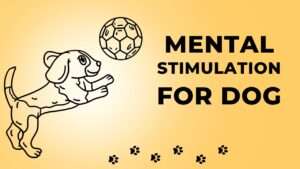



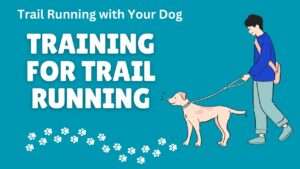


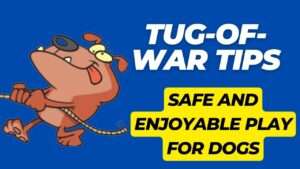

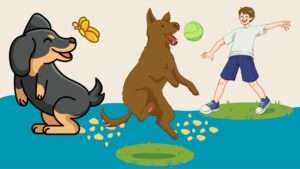


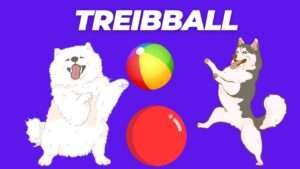




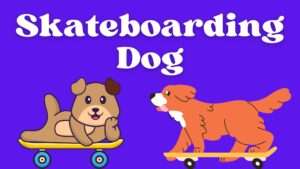







+ There are no comments
Add yours